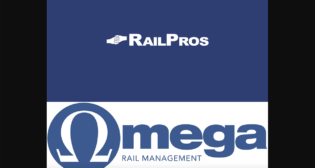
STB dysfunction menaces revenue adequacy
Written by Frank N. Wilner, Capitol Hill Contributing EditorIf you think a theater of the absurd is limited to presidential candidates less popular than the Grinch who stole Christmas, you’re missing Surface Transportation Board (STB) dysfunction where Chairman Dan Elliott’s leadership is infuriating fellow Democrat Deb Miller and Republican member Ann Begeman.
Begeman’s level of frustration with Elliott is manifest in her record number of progressively penetrating dissents, while Miller increasingly has withheld a necessary second vote until Elliott makes revisions to his draft decisions.
The squabbling promotes regulatory delay. A five-year Elliott-led torment to produce a decision on forced competitive access by a second railroad at certain one-railroad served points resulted in Miller holding out for further stakeholder input and a better grasp of the long-term financial impact. Begeman still dissented, irritable the decision failed to identify which shippers will use the access, how and at what cost, and the impact on rail network fluidity. It will be 2017 or later—with voting by up to three new STB members—before a final decision.
Elliott, whose second term extends through 2018, likely remains chairman in a Clinton administration. Donald Trump will name a Republican chairman—not necessarily Begeman, politically attached to Sen. John McCain, and who will be gone if not renominated and Senate-confirmed before Dec. 31. Miller’s term extends through 2017.
The 2015 Surface Transportation Board Reauthorization Act added two new members—creating a five-member STB—but President Obama failed to make timely nominations, likely leaving the choices, including a possible successor to Begeman, for the next President.
A new majority may demand a more in-depth analysis of the access issue. In weighing conflicting predicted outcomes by shippers and railroads, little attention was given by the Elliott-directed staff to the effect of such access where it already exists.
In addition to Canada, where such access is in place, a version exists at Conrail, the switching and terminal railroad in Northern New Jersey, Southern New Jersey/Philadelphia and Detroit. It offers shippers a line-haul choice of CSX or Norfolk Southern, creating price and service competition. Another shared facility is the BNSF-Union Pacific jointly owned line in the Southern Powder River Basin.
The STB also is unsettled in resolving shipper allegations that they are “rate gouged” when lacking effective transportation alternatives to rail. Currently to gain redress, shippers must pursue a Stand Alone Cost (SAC) test requiring they construct, operate and maintain a hypothetical railroad built from scratch.
“The complexity and cost [typically at least $5 million] of the SAC test is astounding,” Miller says. Begeman wrote, “While I had been skeptical about the SAC test prior to my service at the Board, my concerns have only grown as I have seen the SAC process in action.” Shippers call it “the most complicated rate standard in the history of regulation.” They shun as unusable two allegedly more simple alternatives. An STB-commissioned consultant study of the SAC test is under way.
Additionally awaiting STB action is whether and how to implement a rate cap on revenue-adequate railroads; and revisions to—and simplification of—the formula for calculating revenue adequacy. Railroads say the measurement is intended solely as a guide and not meant to summon new pricing restrictions.
Inspiring Congress to partially deregulate railroads in 1980 and provide for safe-harbor pricing was regulatory sluggishness in assisting railroads to achieve revenue adequacy. No issue is so crucial to railroads, shippers and the economy as revenue adequacy—a high-wire act without a net that Congress consistently has identified as regulation’s North Star.
In an economy with the beer turned flat and the fizz off rail earnings, flubbing the dub on what revenue adequacy is and means—and how it is affected by other regulatory decisions—will determine for another generation the level of investment available to renew and expand America’s rail network. Much rides on pending STB nominations.



